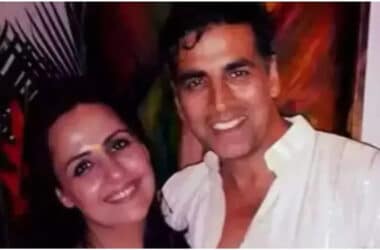“It’s over 9,000” is perhaps the most popular line in the English dub of the “Dragon Ball Z” series. The line is beloved for its drama; it’s an exclamation referring to the unmatched power level of the main character, Son Goku. It was an ongoing joke in my middle school and became one of the internet’s most enduring memes.
But Goku was always an exemplar of staying power, back from his beginnings in the “Dragon Ball” manga created by Akira Toriyama, whose death was confirmed on Friday.
Toriyama is the creator of the manga “Dr. Slump” and “Sand Land” but is best known for “Dragon Ball,” which first published in 1984 and for years ran in the popular Japanese magazine Weekly Shonen Jump. It was successful from the start, but as more people around the world learned about it, “Dragon Ball” attained such levels of popularity that it became one of the standard-bearers of anime.
Despite the prominence of greats like Hayao Miyazaki and the recent surge of live-action adaptations in the United States, it’s still fairly rare that a manga or anime — even given the massive scope, breadth and history of the art form — achieves crossover appeal to mainstream Western media. There have been a few big exceptions. “Pokémon.” “Naruto.” And “Dragon Ball.”
“Dragon Ball” is the story of an alien boy named Son Goku who ends up on Earth. He teams up with a brilliant blue-haired teen named Bulma, and they search for seven dragon balls to summon the powerful wish-granting dragon Shenron.
The worlds and images Toriyama created combined the kung fu-inspired fight sequences of old martial arts flicks with science-fiction and a fantasy-style reimagining of space and technology. The characters burst off the page and the screen: A wild-haired boy in an orange gi flying on a cloud; a whiskered green dragon whose serpentine body coils in Gordian knots in the sky; and seven orange orbs, speckled with small red stars, that when combined offer their collector infinite power.
The U.S. premiere of the anime sequel, “Dragon Ball Z,” starring an older Goku who protects Earth from an ever-escalating array of villains while also contending with fatherhood and his lost heritage, was when Toriyama’s stories really took root in the West.
“Dragon Ball” references abound in Western animation, including “The Fairly OddParents,” “Teen Titans GO!,” “Codename: Kids Next Door,” “The Owl House,” “Avatar: The Last Airbender” and “Robot Chicken.” Characters in “Buffy the Vampire Slayer” and “Shang-Chi and the Legend of the Ten Rings” nod to it, too. Childish Gambino, Frank Ocean and Soulja Boy have featured “Dragon Ball Z” references in their songs. And Goku has inspired the writing of the protagonists in other beloved manga like “Naruto” and “One Piece.”
Even those who never fell under the thrall of Toriyama’s series have likely seen his all-powerful hero somewhere. Goku has popped out of a 3-D billboard in Times Square. He has flown through the streets of Midtown in the Macy’s Thanksgiving Day Parade multiple times. Even today, I’ll see one or two little Gokus running around Brooklyn on Halloween, their orange gis and black foam hair (or yellow mountainous tufts, if they’re one of his super saiyan forms) looking ragged and haphazard from a night of desperate foraging for candy.
“Dragon Ball” is most remarkable even among its influential anime peers because of the hero at the center of its story. Goku is Toriyama’s greatest creation. He’s timeless and he’s unbeatable. Anyone who has watched the various incarnations of “Dragon Ball” know that Goku has faced the threat of total annihilation more often than most of us face laundry day. He has lost; and, yes, he has died multiple times. But he was also over 9,000. Toriyama wrote Goku as, essentially, eternal. Which means that for countless fans around the world, Toriyama’s legacy is the same.
Source link











![Growing up learning Indian Classical Music, I’ve developed a deep appreciation for diverse musical genres, and techno is definitely one that has captured my interest. Got inspired to write this track by blending the beautiful melodies of Hindustani classical, particularly Raag Bhairav, with the beats of techno. Excited to share this fusion with you all!
Music by @miladzki
Check it out and vibe with me! 🎶✨
[ techno, newmusic, fusion, indianclassicalmusic, techno, music, kakisinger ]](https://talentsofworld.com/wp-content/uploads/wp-social-ninja/instagram/9xm.tv/18327743320185528_full.jpg)
![Listen to this Version of Dil Kho Gaya
Original Song From the Movie Dil.
Anand-Milind, Udit Narayan, Anuradha Paudwal sung this song
Music by Anand-Milind
Hope you guys like this Rendition of the Classic Song by Kaki Singer.
Like, Share & Comment.
[ Dil, Dil kho Gaya, old songs, Classic Bollywood, old song covers, retro songs, indian old songs, old hindi songs, melodies, kaki singer, Indian singers ]](https://talentsofworld.com/wp-content/uploads/wp-social-ninja/instagram/9xm.tv/17999564600299237_full.jpg)



















































